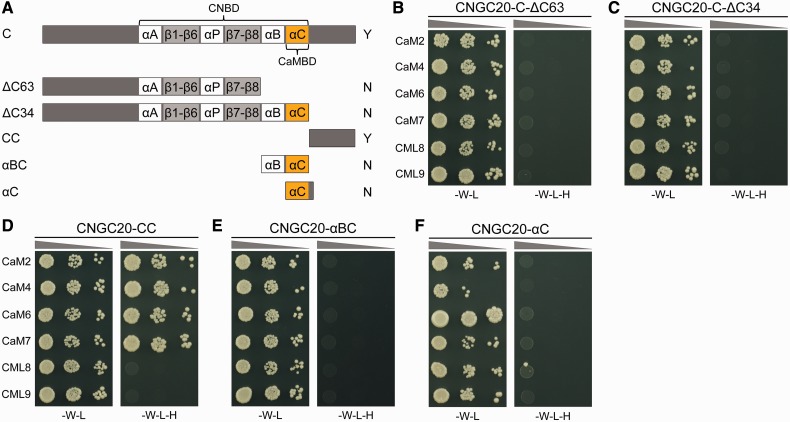Fig. 2.
The CaM-binding domain in CNGC20 maps outside of the CNBD. (A) Schematic illustration of CNGC20 peptides used in YTH assays. Gray bars represent the C-terminus of CNGC20 including the CNBD with eight β-sheets (light gray boxes), three α-helices (white boxes) and the last α-helix (orange, αC) as predicted for the CaMBD. The nomenclature of peptides is explained in the text. Y and N indicate positive and negative interaction results from YTH experiments, respectively. (B–F) Growth results from YTH interaction assays as described in Fig. 1, using peptides as depicted in (A): (B) CNGC20-C-ΔC63 lacking the last 63 residues; (C) CNGC20-C-ΔC34 lacking the last 34 amino acids; (D) CNGC20-CC representing the last 34 amino acids without the predicted αB- and αC-helices of the CNBD was able to interact with CaMs; (E and F) a fragment containing the αB- and αC-helix (αBC) did not interact with CaMs (E) nor could the extension of the αC helix (αC) to the motif WRLR restore CaM interaction (F).

